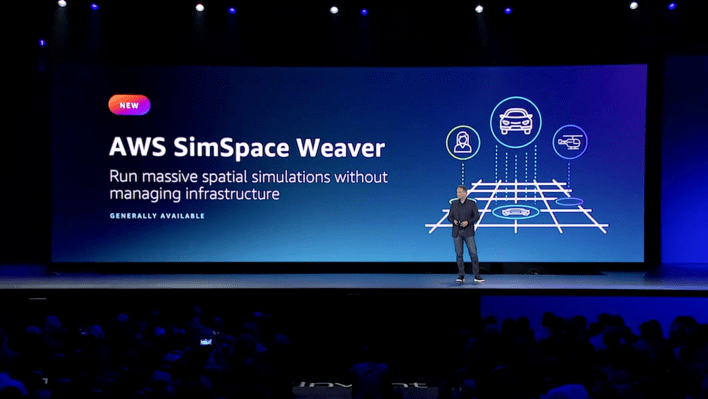At this morning’s re:Invent keynote in Las Vegas, Amazon unveiled AWS SimSpace Weaver, a computing service that allows developers to run city-sized simulations at scale in the cloud. The service is designed to free simulation developers from the constraints of their own hardware.
Amazon’s proposed applications are for city managers simulating a natural disaster to test emergency response systems, as well as the impact of sports games on traffic flow. These are complex situations with a lot of moving parts, which shouldn’t require watching a real-life instance to gain insight. Among the other advantages to running this in the cloud is the ability to have multiple external parties view and interact with the simulation remotely in real time.

Image Credits: Amazon
“Simulating these events requires modeling hundreds of thousands of independent dynamic entities to represent the people and vehicles,” AWS principal developer advocate Marcia Villalba notes in a blog post. “Each entity has its own set of behaviors that need to be modeled as it moves throughout the world and interacts with other entities. Simulating this at a real-world scale requires CPU and memory beyond what you can have in one instance.”

Image Credits: Amazon
The system works by portioning the space into instances and partitions, creating the kind of grip design you see above. SimSpace Weaver’s data replication system manages memory management and networking for transferring entities across partitions. The company notes that SimSpace Weaver is not itself a simulator. Instead, it creates a basis on which a simulator can be built across instances, effectively weaving (hence the name) multiple instances together into a single experience.
Unity and Unreal Engine 5 developers can access the system through SimSpace Weaver plug-ins. It’s available starting today in the U.S. East, U.S. West, Asia-Pacific and Europe AWS regions. There’s no licensing fee; instead the pricing depends on the number of instances a developer integrates into the simulation.

